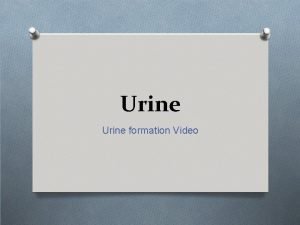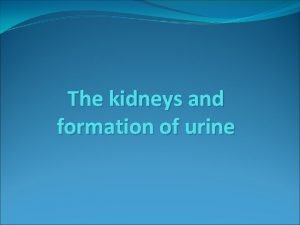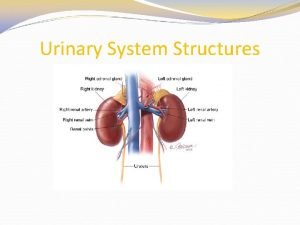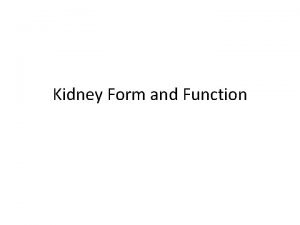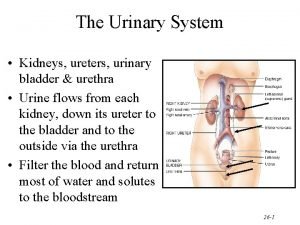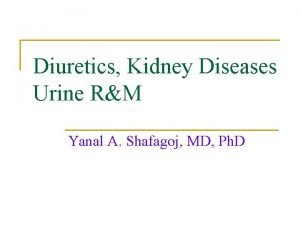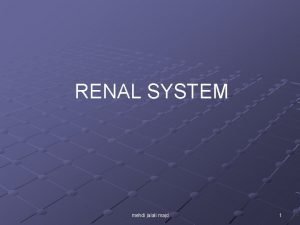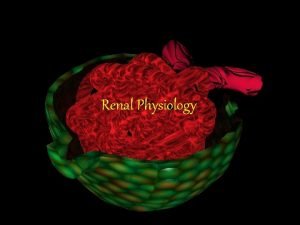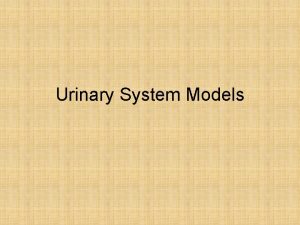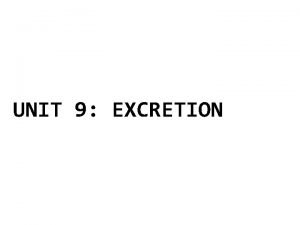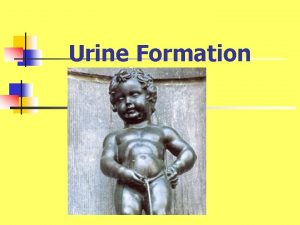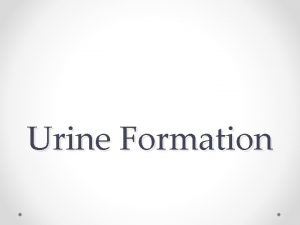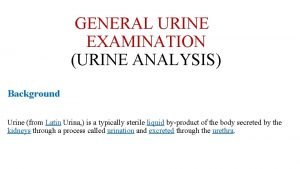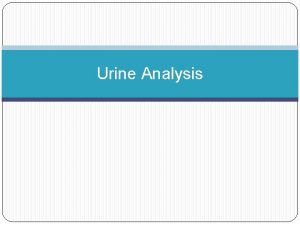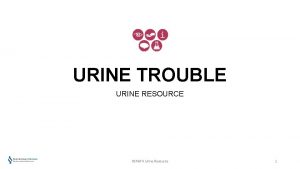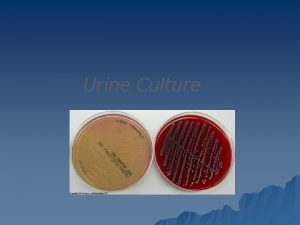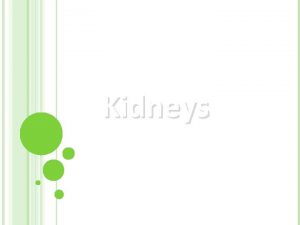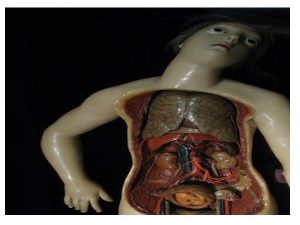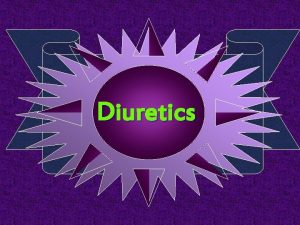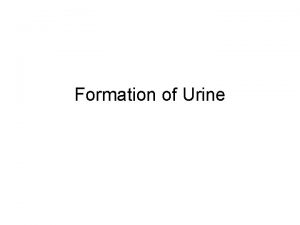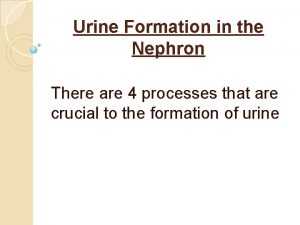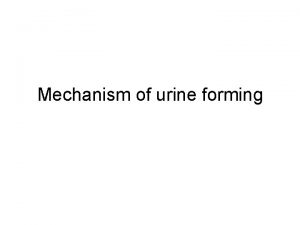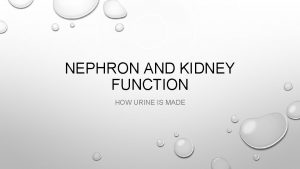URINE FORMATION IN THE NEPHRON 9 2 Formation
















- Slides: 16

URINE FORMATION IN THE NEPHRON 9. 2

Formation of Urine 3 main steps: -Filtration, Reabsorption, -Secretion 1. Filtration Dissolved solutes pass through walls of glomerulus into Bowman’s capsule Plasma proteins, platelets, and blood cells are too large to pass

2. Reabsorption 1 m. L urine formed / 120 m. L fluid filtered the rest is reabsorbed Occurs by both active & passive transport Occurs until the threshold level of a substance is reached the rest is excreted Solutes actively transported out of nephron create an osmotic gradient

3. Secretion Movement of wastes from blood into nephron Nitrogen-containing wastes Histamine H+ Drugs (ie: penicillin) Cells loaded with mitochondria line distal tubule aid in active transport

4 PROCESSES IN THE FORMATION OF URINE Glomerular Filtration Moves water and solutes from blood plasma into nephron Tubular Reabsorption Removes useful substances and returns them to blood (eg. sodium) Tubular Secretion Creates filtrate Moves additional wastes and excess substances from the blood into the filtrate Water Reabsorption Removes water from filtrate and returns it to blood

Glomerulus

GLOMERULAR FILTRATION Factors contributing to filtration: Permeability of capillaries Glomerular capillaries have many pores in their walls Prevent blood cells and proteins from passing through – most other substances can pass Blood Pressure 4 X greater in glomerulus than in other capillary beds in the body Provides force for filtration 180 L / day of filtrate Very similar to plasma at this point

Proximal Tubule

TUBULAR REABSORBTION: PROXIMAL TUBULE 65% of filtrate is reabsorbed in the proximal tubule Involves active and passive transport Cells of proximal tubule are loaded with mitochondria to aid in transport Focuses on transporting Na+, glucose Negative ions follow Water follows by osmosis

Loop of Henle

TUBULAR REABSORPTION: PROXIMAL TUBULE (CONTINUED) Loop of Henle Function: absorb water and ions Descending loop very permeable to water, slightly permeable to ions Medulla is salty drives movement of water by osmosis Concentration of Na+ inside Loop of Henle increases Ascending loop becomes more permeable to solutes Thin-walled section: Na+ move along concentration gradients, passing into blood vessels Thick-walled section: Na+ is now moved out of filtrate by active transport Helps to maintain salty environment of medulla

Distal Tubule

TUBULAR REABSORPTION: DISTAL TUBULE Reabsorption of ions decreases the concentration of the filtrate, causing water to be reabsorbed by osmosis Potassium and hydrogen ions are actively secreted into the distal tubule from the bloodstream Other substances (eg. Drugs like penicillin) are secreted into the distal tubule

Collecting Duct

REABSORPTION FROM THE COLLECTING DUCT Passive reabsorption of water in collecting duct High concentration of ions outside the collecting duct, in the medulla If blood plasma is too concentrated, permeability to water in the duct will increase Filtrate is ~4 X more concentrated by the time it exits the duct Filtrate is now called urine ****TABLE 9. 2, Pg 315 – excellent study tool

Summary
 Dari hasil tes urine ternyata urine
Dari hasil tes urine ternyata urine Nephron formation
Nephron formation Renal columns
Renal columns Urinary system introduction
Urinary system introduction Urine formation video
Urine formation video Urine formation diagram
Urine formation diagram Urine formation introduction
Urine formation introduction Figure 15-4 is a diagram of a nephron
Figure 15-4 is a diagram of a nephron Nephron
Nephron Urinary system histology
Urinary system histology Urine r m
Urine r m Sterile pyuria ppt
Sterile pyuria ppt Where does secretion occur in nephron
Where does secretion occur in nephron Efferent and afferent
Efferent and afferent Kidneys location and structure figure 15-1
Kidneys location and structure figure 15-1 Sodium reabsorption
Sodium reabsorption Nephron diagram labeled
Nephron diagram labeled




